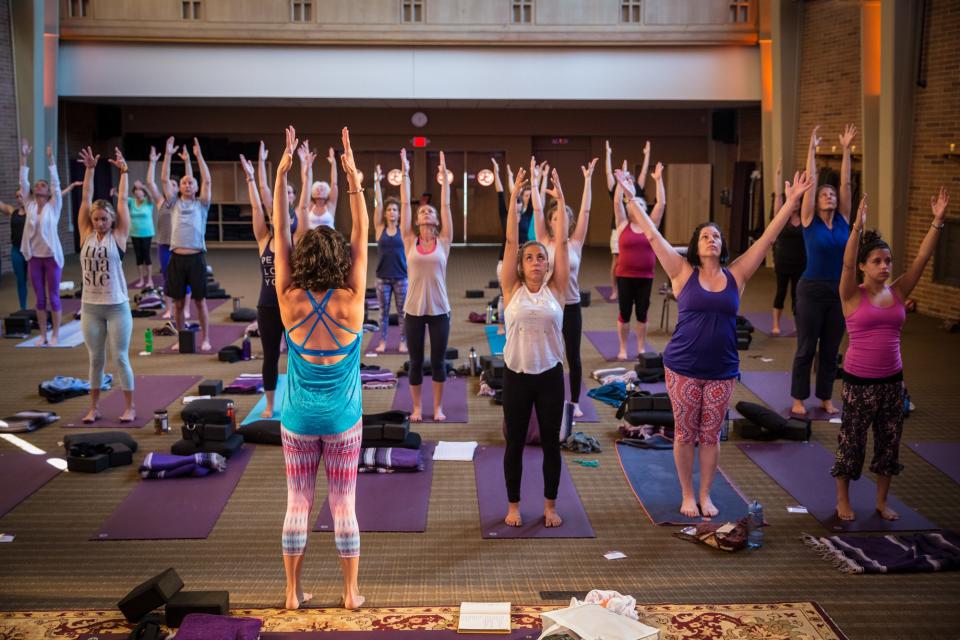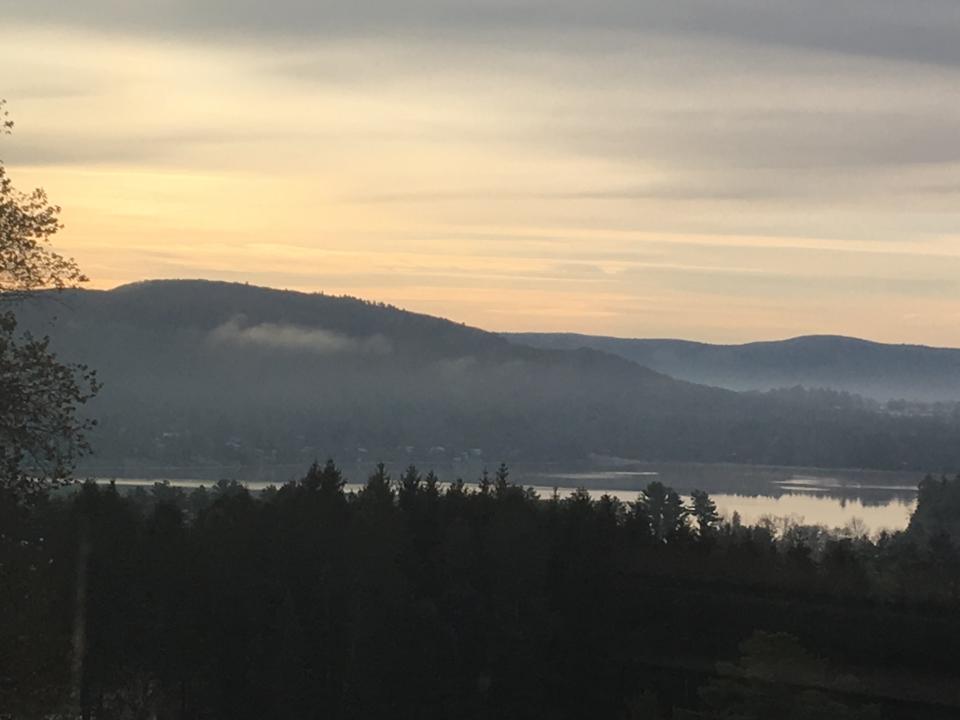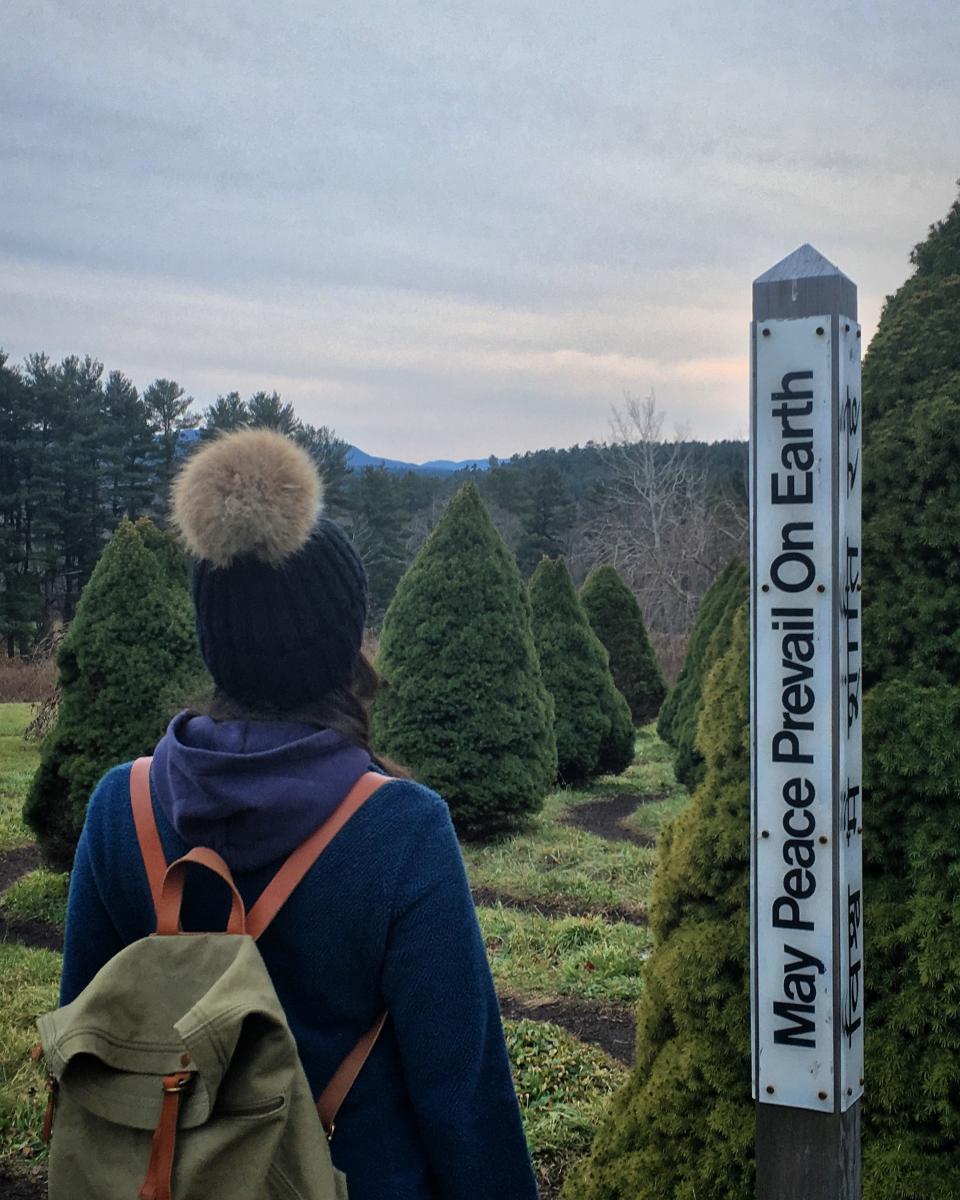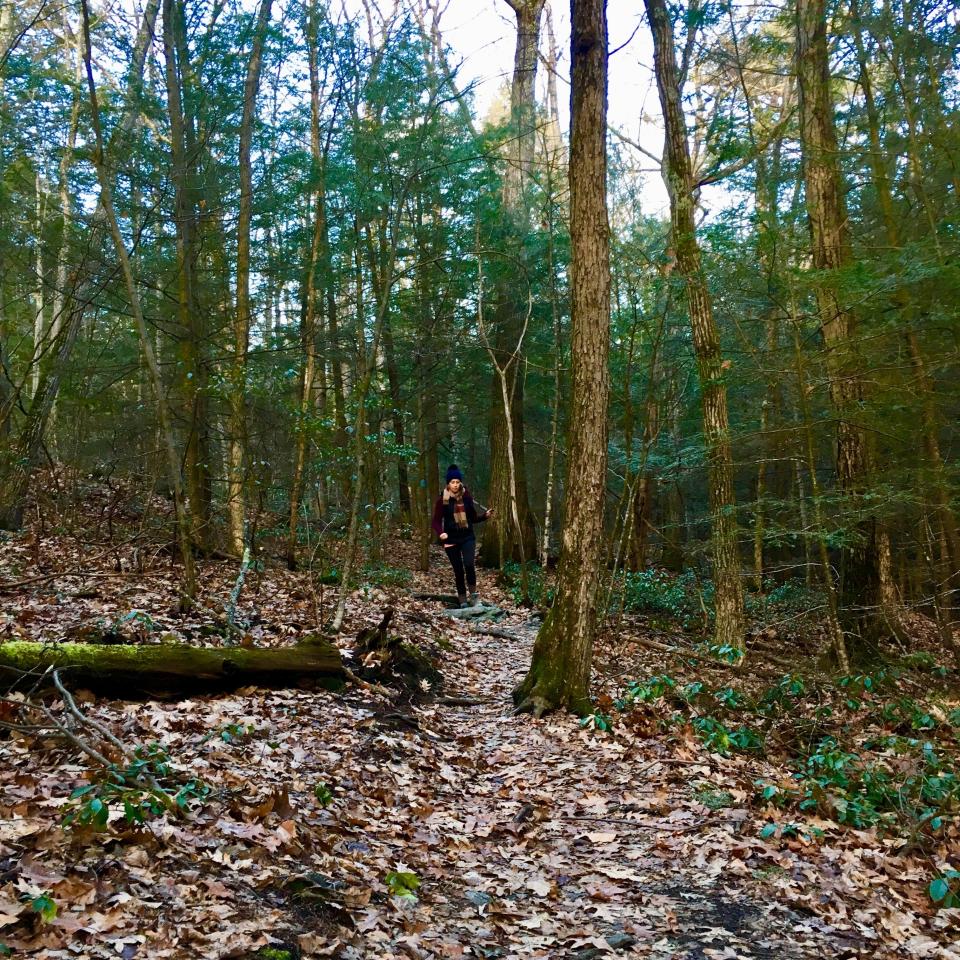3 Low-Key Life-Changing Lessons I Learned at My First Kripalu Wellness Retreat

I’ve made a living as a professional wellness and travel writer for more than a decade, so you may be surprised to find out that I went on my first weekend yoga retreat just a couple months ago. Yes, yes, it’s a weird fact, especially considering that yoga retreats are kind of the meet-in-the-middle epitome of my two specialties. But the truth is, I was skeptical. I love yoga, but I don’t live and breathe it like some yogis do—so I just wasn’t sure about devoting an entire trip to it. Plus, I’m not much of a joiner in general, so quite frankly, the thought of being forced to stick to a strict class schedule for a whole weekend or longer on my time off never really appealed to me.
All of that changed when I got invited on an “R&R Retreat” at Kripalu, one of the most well-known yoga centers in the world. Located in the beautiful mountains of the Berkshires in Massachusetts, Kripalu is actually a nonprofit organization dedicated to helping people realize their full potential through yoga. But as empowering as their mission is, what really sold me on the trip was the flexibility of the R&R program. Essentially built for retreat skeptics like me, the R&R retreat lets you create your own schedule—so it sounded like a great way to ease my way into the yoga retreat scene. Dip my toe in, you know? There would be multiple yoga classes per day, they told me, but they also said that a) I didn’t have to go to them if I didn’t want to, and b) there would be other things to do, too, like hiking. And straight chilling. It sounded right up my alley!
Kripalu graciously offered me a +1, so I brought my friend and number one yoga buddy Zoe along for the ride. Zoe and I got into yoga together a couple years ago, and she is also a fellow non-joiner, so I knew she’d appreciate the relaxed pace and freedom of what we came to call our “retreat lite” trip.
Well, brace yourself for this one: Zoe and I both loved the retreat so much that we are now—gasp—retreat converts. Yep, Kripalu was 100 percent our gateway drug, and now we are all in. We’re already hatching a plan for our next yoga retreat, in fact, and this time, we’re going to go hardcore. So what happened?

Zoe and I were reminded how yoga isn’t just about going to classes—it’s about a lifestyle.
Zoe and I both knew before the retreat that these yoga classes we go to in New York are only part of the full story. My fiancé grew up in New Delhi, India, and he is constantly reminding me that the asanas (the poses) we do during class are only one of the eight limbs of yoga, all of which are meant to act as guidelines for how to live a purposeful and meaningful life. But even though we knew this in theory, actually living the yogic lifestyle in reality, in a condensed period of time, was another story. Experience is the best teacher, and we got schooled.
Here are the three biggest lifestyle lessons we learned at Kripalu that show how yoga goes far beyond the poses:
1. Going to bed at 10 P.M. is a really, really good idea.
Kripalu has a very strict “lights out at 10 P.M.” policy. They even call it out in the welcome pamphlets they leave on your pillow. Not gonna lie, Zoe and I were a little turned off by this policy on our first night, because we had just come from Manhattan, and hadn’t yet had the time to shed our frazzled city skins. As 9:30 P.M. rolled around, we were still buzzing, checking stuff on our phones, and trying to figure out our weekend schedule. But we wanted to at least try to get the authentic Kripalu experience, so we obeyed the policy and forced ourselves into bed. And the next morning, we woke up feeling more refreshed than we had in months.
Going to bed at 10 P.M. is not exactly rocket science, I know. But considering that both Zoe and I hadn’t actually done this on a regular basis, ever, it was an awakening of sorts—and one that is apparently rooted in ancient yoga tradition. “In yoga, the idea behind going to bed early is so that we can wake up early before the sun to take advantage of the quietest time of day, a time known as ‘brahma mahurta’ in Sanskrit,” says Erin Casperson, Kripalu yoga teacher and Dean of the Kripalu School of Ayurveda. “This is the auspicious time before the sunrise, and it’s most supportive for meditative practices because there’s this stillness that exists before the rest of the world wakes up—which makes it much easier to focus our energy inward.” That stillness has a Sanskrit name, too: sattwa. “Sattwa is a state of mind where there’s an absence of restlessness, when you’re feeling most at ease. It’s beyond feeling calm; it’s getting a little glimmer of stillness in an otherwise hectic world—and your chances of experiencing it are higher in the morning,” Casperson explains.

For the record, I’m not saying that I have been a perfect 10 P.M. bedtime angel since I’ve been back from Kripalu. That’s just unrealistic, especially considering that I live in the city that never sleeps, and I often have events that require my presence past 10 P.M. But I will say that I’ve been better about going to sleep earlier on nights when I’m home. On nights when I’m really on top of my game, I put my phone to bed around 10, at which point I crawl into my actual bed soon after. I’ve started charging my phone on the other side of the bedroom, which seems like a small change but has actually made a huge difference. Knowing I can’t scroll through Instagram even if I wanted to definitely helps me fall asleep faster—and therefore wake up earlier to chill in the stillness of the morning, before the rest of the world starts buzzing.
2. Silent meals are golden.
Another Kripalu rule is that breakfast is silent. Our first experience with this concept was predictably hilarious; Zoe and I were like school children being told they can’t talk during detention. We kept making eye contact with each other, stifling our giggles and trying to communicate with signals. But about halfway through our meal, fed up with our unintelligible eye conversation, we both slipped into the silent breakfast ethos, and concentrated on our food. And you know what? It was kind of glorious. It was even more glorious the next morning, when we slid right into it, old pros that we were. Sitting there, knowing conversation was not on the table (lol), we were forced to pay attention to our plates, and to ourselves—which Casperson says is the entire point of the rule.

“It’s not really about spending your breakfast in silence as it is about paying attention to what you’re eating. And when you eat in silence, you’re able to do that more easily because your ability to be present with your food is heightened—especially if you can relax into the silence. You can slow down, chew more, and taste more,” she says. To be clear, the ancient yoga texts don’t come out and say “eat your breakfast in silence,” Casperson points out, but they do talk about eating in silence as an extension of your mindfulness practice. “It’s simply another experience of yoga, of slowing down and turning your attention inward.”
To answer the question I assume you may be asking, no, I have not straight up stopped talking to Rahul in the morning. Of course I haven’t. I happen to love our pre-work coffee and music sessions! But on mornings when Rahul leaves the apartment without eating breakfast, which is actually fairly often (we’re working on that), I’ll take the time to make myself a morning meal—and then sit down and enjoy it in silence. On these days, I don’t start checking my emails while I’m eating. I don’t read while I’m eating, either. I just eat. I literally just sit on the couch with my bowl of whatever (oatmeal or eggs, mostly), and I just eat.
It’s a ritual that helps me feel more mindful, and I’ve noticed that that mindfulness often carries over into the rest of my day. It’s not a huge, wild difference or anything, but I’ve found that on mornings when I ease into my day with a silent breakfast, I’m a little bit more focused and in tune with myself in the following hours. That usually means that I’m more likely to take the time to think things through before immediately replying to every email I receive, and I’m less likely to react negatively when things don’t go my way. All good things!

3. Making a point to get outside in nature is a must.
The ancient tradition of yoga is thousands upon thousands of years old, and when it first originated, its followers surely weren’t practicing on rubber mats. They practiced outside, in shala huts, which are basically outdoor yoga spaces (shala means house in Sanskrit, and the term is used to mean a “house of yoga”). Practicing outdoors made them feel closer to nature in general, and that focus on nature is still a big part of the yogic lifestyle today, says Casperson.
“A big part of practicing yoga in all ways is making a point to get outside in nature, which is why we offer guided meditation hikes at Kripalu,” explains Casperson. Zoe and I went on long hikes every day we were at Kripalu, and it certainly added to our grounding experience. “When you’re outside in the woods, there’s a natural inclination to get quiet, because everything moves a bit slower," he continues. "It’s a therapeutic place, the woods, a place to get away from people and noise and distractions and just listen. And be.”
I’m a huge nature fan, and I already try to get outside as much as I possibly can in this crazy city of mine, but I'd never made the connection between eating lunch or jogging in the park and yoga. The hikes served as a nice demonstration that spending time outside is just as important for my yoga practice as going to a class. Out there in the woods with no one but each other and the birds, Zoe and I, like all of the Thoreaus and the Emersons and the Whitmans before us, felt more introspective than we had in months. And that’s a yogic lesson we certainly didn’t learn on a rubber mat.
Annie Daly has written about travel for BuzzFeed Travel, Yahoo! Travel, AFAR, United Hemispheres, Cosmopolitan, and more.


